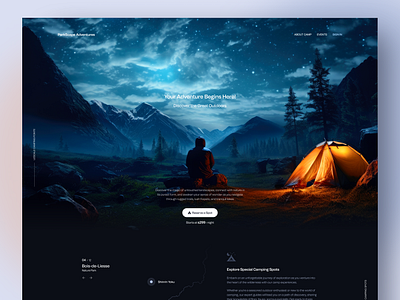How Web Design Affects User Engagement and Conversion Rates
How Web Design Affects User Engagement and Conversion Rates
Blog Article
Why Web Layout Is Crucial for Building Trust and Engaging Customers
In today's electronic landscape, the value of web style prolongs far beyond visual appeals; it is an important variable in developing trust fund and fostering customer engagement. A well-crafted site not only shapes first impressions however additionally affects individual experience, which can figure out the long life of customer partnerships.
The Impact of First Impressions
The minute a visitor arrive at a web site, they swiftly develop a perception that can either engage them or drive them away. This instant assessment, frequently based on aesthetic components, layout, and total aesthetics, plays a crucial duty in establishing whether customers will explore more or leave right away. Research study indicates that customers commonly make judgments regarding a site's reliability within mere seconds, emphasizing the demand for a expert and polished design.
A well-structured internet site that shows brand name values fosters trust fund and motivates customers to dig much deeper into the content. Crucial element such as shade schemes, typography, and images should straighten cohesively to produce a visually enticing experience. On the other hand, a outdated or messy design can stimulate suspicion, leading possible customers to doubt the brand's dependability.
Moreover, the impression prolongs past mere visuals; it includes navigating ease and performance. An internet site that is easy to use and instinctive guarantees site visitors really feel comfy exploring its functions. Inevitably, the impact of very first impacts can not be overstated; they lay the foundation for customer engagement and long-term partnerships. Buying efficient internet layout is, therefore, a vital method for constructing trust and inviting users to communicate with the brand name.

Value of User Experience
A positive impression sets the stage for a much deeper connection in between the website and the customer, making customer experience (UX) an important element of web design. UX includes all aspects of the end-user's communication with the site, influencing their complete satisfaction and interaction levels. A properly designed UX guarantees that users can navigate the website with ease, locate info promptly, and complete desired actions easily.
Crucial element of reliable UX consist of receptive design, which enables for smooth access on different tools, and clear navigating that minimizes cognitive tons. When users run into rubbing, such as slow-moving filling times or complicated layouts, they are most likely to desert the site, bring about prospective shed sales and reduced trust.
Furthermore, a positive UX fosters psychological connections, urging individuals to return and recommend the site to others. In today's affordable landscape, spending in individual experience is not just valuable; it is necessary for lasting development and success.
Structure Brand Name Trustworthiness
Developing brand credibility is vital for promoting depend on amongst individuals and making sure long-lasting involvement with a web site. A well-designed site works as the structure whereupon credibility is constructed. Crucial element such as expert aesthetic appeals, intuitive navigation, and mobile responsiveness mirror a brand name's commitment to quality and individual fulfillment.
Furthermore, including components like customer reviews, study, and industry certifications can considerably improve perceived reliability. These parts offer concrete evidence of a brand's reliability and knowledge, strengthening customers' confidence in their selections.
Consistent branding across all digital touchpoints also plays a vital role. Identifiable logo designs, uniform shade plans, and cohesive messaging develop a sense of experience and credibility. When customers see a consistent brand name visibility, they are most likely to view the brand as reliable and authoritative.
On top of that, security functions such as SSL certificates and transparent personal privacy policies discover this comfort customers that their data is risk-free, further strengthening trust fund. By prioritizing these elements in website design, companies can properly develop brand reliability, producing a solid you could try this out foundation for client loyalty and lasting success in a significantly electronic market.
Enhancing Consumer Engagement
Engaging clients effectively needs a calculated strategy that goes past plain aesthetics. Web design. A well-designed site utilizes visual components, web content, and performance to create an immersive experience that records site visitors' interest and encourages communication. Secret components consist of user-friendly navigating, compelling calls-to-action, and purposefully put content that resonates with the target market
Interactive functions, such as polls, tests, and comment areas, foster a feeling of community and urge individuals to get involved actively. This involvement not just enhances individual experience but additionally supplies important understandings into consumer preferences and habits. Additionally, integrating multimedia components like videos and infographics can convey details much more dynamically, maintaining customers engaged longer.
Moreover, customization plays a crucial duty in improving customer interaction. Tailoring content based upon individual behavior and preferences makes visitors feel valued and understood, increasing the probability of return sees and conversions.
Eventually, an internet site made with interaction in mind transcends mere functionality; it comes to be a system for constructing connections. By prioritizing individual experience via thoughtful style and interactive elements, services can grow deeper connections with their target market, cultivating loyalty and encouraging recurring involvement.
Mobile Responsiveness and Accessibility

Creating with availability i was reading this in mind ensures that all individuals, consisting of those with impairments, can connect with the website successfully. Accessibility not only expands the audience however additionally aligns with ethical obligations and lawful criteria.
Furthermore, internet search engine prioritize obtainable and mobile-responsive websites in their positions. This indicates that purchasing these aspects not only improves individual involvement yet also improves visibility in search outcomes. In conclusion, mobile responsiveness and availability are indispensable in website design, straight affecting individual trust and total customer engagement.
Conclusion
To conclude, efficient website design plays a pivotal role in developing trust fund and fostering customer engagement. By creating a user-friendly and aesthetically attractive user interface, companies can boost impressions and enhance general customer experience. The assimilation of responsive style even more ensures accessibility throughout different tools, suiting a broader target market. Ultimately, a well-structured site not just boosts brand name trustworthiness however also grows long-term consumer partnerships, making website design a crucial element of successful digital method.
A well-crafted web site not just shapes first perceptions yet also influences individual experience, which can determine the long life of customer relationships. Research indicates that individuals typically make judgments concerning a website's integrity within simple seconds, emphasizing the need for a professional and refined style.
Spending in effective internet design is, consequently, an important strategy for constructing trust fund and inviting users to interact with the brand name.

Report this page